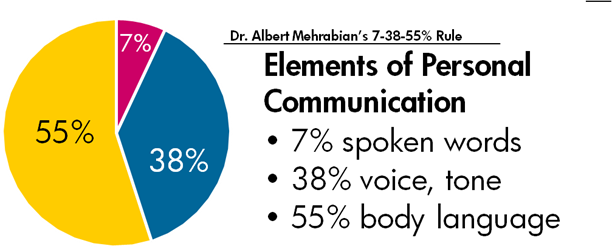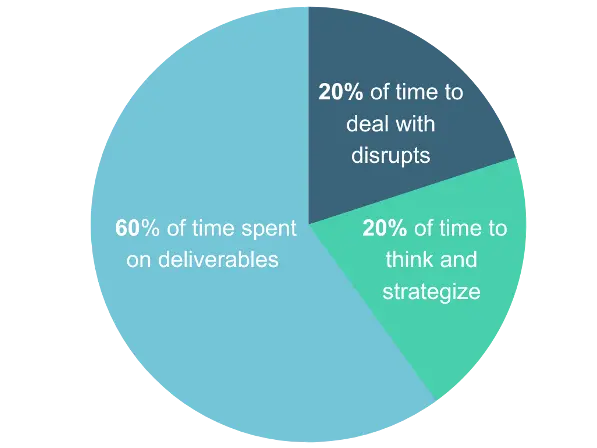In our most recent Strategy Collaborative master class, we spoke with Bob Smith of MySuccess, Inc. to discuss effective ways to make your OKR process work for you and avoid an OKR mess and overwhelm. Read on for our tips! But first, let’s recap what OKRs are and why they’re effective in strategic planning.
A Review on OKRs
OKR stands for objectives and key results.
OKRs are a framework for deploying organizational strategy through targets and shared commitments. It is a goal-setting framework where objectives outline an organization’s desired outcomes and are supported by 3-5 quantifiable and measurable metrics called key results.
OKRs are about outcomes and results…
An objective defines what you will do to reach your strategic goals and the impact you will have this year.
They are measured by the qualitative progress of supporting key results or the quantitative key performance indicators (numeric, percentage, or monetary earnings).
A key result defines how you will achieve the objective and results that your organization will deliver to make your desired impact a reality.
They are measured as quantitative metric results (numeric, percentage, or monetary earnings) or the qualitative progress of specific projects or the completion of deliverables.
6 factors that make OKRs unique
There are several qualities that an an OKR framework or methodology must possess that make them unique and inspirational as a strategic planning framework:
- Clarity — OKRs create an environment of common goals and shared commitments.
- Results — OKRs are based on outcomes andresults that drive organizational direction, NOT outputs and activities.
- Engagement — Teams set their course of action that aligns with company-wide goals versus passed-down accountabilities.
- Agility — Managing performance and re-calibrating OKRs every quarter enables a dynamic and agile planning process.
- Accountability — OKRs are a powerful way to connect individual action to company results.
- Focus — Setting 3-5 OKRs per team keeps the process manageable and enables effective execution.
Ultimately, objectives and key results are powerful because they allow your process to be actionable, adaptable, and dynamic, as they help you achieve your business-impacting outcomes throughout your entire organization too.
Practice #1 — Strategy First, OKRs Second
The primary key to avoiding OKR puddles is ensuring your organization has clarity and a well-defined connection to your organizational-wide strategy.
OKRs should not exist in isolation but should seamlessly align with your organization’s mission, values, and strategic direction.
Pro Tip
An OKR planning process takes your organization’s strategy and vision and gives it concrete action for achievement!
How to avoid OKR puddles
Your OKRs should play a vital role in the larger strategic picture. But you can’t implement OKRs without first creating an organizational strategy, strong>including a big, bold vision, a winning growth strategy, and a strategic framework.
Before creating OKRs, you MUST complete the following:
- Conduct an internal/external analysis: It is best to start your OKR planning and alignment process with an internal and external analysis to understand your organization’s strengths, weaknesses, limitations, and capabilities.
- Define your bold vision of the future: OKRs must support your organization’s strategic direction. Without a vision, they create puddles of focus.
- Set a winning growth strategy: This includes where you play, how you win, and what outlines your approach to growth.
- Create a strategic framework: Build the framework for your long-term plan.
OKRs MUST be aligned to your long-term direction
Alignment is imperative to reaching your strategic goals. Your OKR planning process must be connected to your vision and long-term, organization-wide direction. If they aren’t, OKRs can quickly turn into a mess. Here are three helpful questions to consider:
- Where is our broad, long-term strategic direction headed, and how do our strategic goals support this?
- What are our objectives, and how do they impact the organization? Your objectives should be shared by your team, championed by a leader, and incorporate an annual focus.
- How do our key results support the objectives, and how will our prioritized projects ultimately cascade into our strategic goals? Individuals own the key results, and results are reported quarterly.
There is so much more to talk about regarding OKRs, so be sure to check out our resources for a full breakdown and even download our OKR cheat sheet or watch our OKRs that Work playlist on YouTube!
A structured approach to OKRs, reviews, and refreshes
Ultimately, objectives and key results should follow a structured approach. We recommend working in quarterly or 13-week sprints to maintain focus and adaptability. Regular calibration and adjustments are vital to ensure you stay on track. Here’s a highlight:

Strategic goals (every 3-5 years)
Set your organization’s long-term strategic goals that support your long-term vision of the future.
Objectives (annually)
Set organization-wide objectives that support your long-term strategic goals.
Set/refresh key results (quarterly)
Set organization or department-wide key results that support your annual objectives. This ensures every team and department directly contributes to the company’s strategic goals.
Review key results (monthly/quaterly)
Review your key results monthly to see how you’re moving against your quarterly targets.

It’s not just about outcomes – it’s about IMPACT
OKRs allow you to go beyond just delivering results; they empower you to craft a compelling story around your achievements.
They allow you to illustrate your impact and significance as your team collectively produces results that often exceed individual contributions.
Instead of merely focusing on output, which often involves a rigid checklist approach, the emphasis has shifted towards defining the desired outcome and being flexible in your approach to achieve it.
Pro Tip
A successful OKR planning process answers, “What is the significance of achieving this outcome?” Outcomes are helpful, but IMPACT creates a lasting impression.
It’s one thing to seek to achieve the outcome of 20% growth in profits, but it’s another to think about the impact that 20% growth will have beyond the achievement itself. Maybe that means more returns to shareholders or the resources now to grow in the next year.
The impact is the bigger story. OKRs allow you to see the broader impact your outcomes have on the world and the people around you, as well as your desired future.
Practice #2 — Empower OKRs through Strategic Communication
What’s the driving force behind the OKR planning process?
It’s all about asking the right questions and continuing to ask them again and again. Questions are the horsepower of OKRs. They fuel the process, driving you to refine your objectives and key results effectively.
When forming your OKRs, questions, and communication matter. Create an avenue and culture of continuous communication. To create a culture of open and constant communication, you may have to understand the psychology of communication.
The 7-38-55 rule
A study in the 1970s by renowned psychologist Dr. Albert Mehrabian stated that communication and expression can be broken down into three categories— spoken, tone of voice, and body language.
He stated that the percentage breakdown of how people derived meaning was 7% through spoken words, 38% through tone of voice, and 55% through body language or facial expressions.

This same principle can be applied to OKR creation. When we create flat OKRs focused on one-dimensional metrics, it’s difficult to get people onboard. We need to develop OKRs that excite and inspire our teams. Creating and communicating OKRs with intention, purpose, and energy creates opportunities for engagement.
Getting your team bought into your OKR implementation process comes in 4 steps:
1. Connect, 2. Align, 3. Commit, and 4. Communicate!
4 Reasons clear communication is a pillar in any OKR methodology:
- Getting your team bought into your direction is critical – and that means everyone needs to understand where you’re going and why.
- Great OKRs communicate focus and impact – who is accomplishing what to achieve your desired future state.
- Getting your team bought in is more than just words. It’s about using your voice, tone, and body language to energize your team about where you’re going and why. Your energy level as a communicator and leader directly impacts the quality of your team’s OKRs!
- OKRs can help communicate your value and the value you bring.
Pro Tip
Clear, concise communication in ANY strategic planning and OKR implementation process is the best way to turbo-charge your impact.
Practice #3 — Avoid OKR “Overwhelm”
Pro Tip
Clear, concise communication in ANY strategic planning and OKR implementation process is the best way to turbo-charge your impact.
The primary contributor to OKR overwhelm is people’s misconception as they expect OKRs to automatically do the work for them after they’ve set them up. But OKRs are not a set-and-forget process. To avoid an OKR mess, you need to interact with them frequently.
OKRs work best as a team effort, providing a basis for collaboration and avoiding the feeling of isolation in tasks. Revisiting the measurable metrics along the way is crucial, as specific metrics matter more than just effort. OKRs aren’t set in stone; they can be adjusted if needed.
OKRs require rapid realignment
When you start getting concerned because your expectations on deliverables seem to be slipping, it is time to re-align. You can re-align your OKRs in 3 steps:
- Revisit the OKR and measurables.
- Identify the gap and draw team focus on getting movement toward the desired outcome.
- Focus on getting to your outcome instead of blaming for non-performance.
Pro Tip
Sometimes, we get frustrated with the process. Frustration can be a vital asset as it tells us to pay attention to something.
Frustration can serve as an asset, signaling the need to pay attention to gaps and challenges. Anyone, not just team leaders, can pull the team together to address these issues. Identifying gaps, problem-solving, and ensuring that OKRs remain relevant are part of the process.
Benchmark consensus and alignment
To make effective decisions and foster teamwork with OKRs, constant calibration and evaluation of your team’s alignment are vital.
Identifying your focus, assessing your position, and recognizing any gaps provide a foundation for meaningful choices. OKRs aren’t just about individual tasks; they have ecological implications, influencing team dynamics and relationships.
Team dynamics are essential in the OKR planning and implementation process. Often, issues are transactional, but relationships are ongoing.
Teams sometimes avoid addressing concerns to preserve harmony, but unspoken tensions can strain relationships over time. Neglecting these can lead to reduced connections.

To counter this, maintain regular calibration and perform gut checks if you’re not experiencing the desired level of interaction.
This approach extends beyond mere OKR discussions. Integrating team alignment into your quarterly and monthly reviews becomes about monitoring performance and assessing the connection among team members. When you embed this practice in your OKR planning processes, you emphasize the importance of fostering strong relationships and alignment in achieving objectives.
Pro Tip
A helpful approach to address with your team during the OKR implementation process is to ask, “If I have a problem, what is the best way to bring it to you?”
Practice #4 — Create Meaningful Relationships
OKRs are an organization and team’s focus on THE MOST critical outcomes, and sometimes, within that, we forget an essential part of the OKR methodology — the people!
Often, departments focus on their execution plans without considering interdependencies, except when they involve external entities like vendors.
OKRs create shared purpose and cross-functionality—not just ownership
Cross-functional collaboration can often be neglected in strategic planning. OKRs address this by prompting teams to identify what they aim to achieve and who they impact, fostering a deeper understanding of interrelationships.
OKRs encourage the establishment of relationships with clear expectations. Rather than expecting constant interaction, they set a framework for when support is needed.
Establish a framework for the relationship on what your working relationship means and doesn’t mean. Most functional areas don’t plan for interdependencies. As such, you can solve this in a few ways:
- Share the trigger points and communication plan for monitoring.
- Identify and track the trigger points to stay aligned.
Pro Tip
Trigger points, or “early warning signals,” help anticipate interdependencies, enabling proactive dialogue. Being proactive and staying ahead of issues is crucial.
To ensure effective collaboration, individuals should identify and track these trigger points and negotiate relationship conditions with their counterparts in different functions.
Being 100% booked means you don’t have room for alignment or strategy
It’s true – if you’re 100% booked on creating deliverables and disrupts, you can’t dedicate the time you need for thoughtful strategic thinking. We like to follow the 60/20/20 Rule.
- You should aim to accomplish 100% of your deliverables in 60% of your time.
- 20%should be spent dealing with disruptions.
- 20% should be spent thinking and strategizing.

Five critical principles of well-formed relationships
- Relationships are not efficient – trust and relationships take time to build and develop, but they are worth it.
- You must establish what each relationship is and is not.
- Interdependencies are cross-functional relationships.
- Avoid appliance relationships— no one likes to feel like they are only sought out to be used for a specific function.
- Exchange your ‘best practice’ problem-addressing styles.
Creating trusting relationships in your team takes time – and it’s mandatory for success in any organization. It’s even more true when it comes to OKRs. Being 100% booked also means you don’t make time for relationship development.











